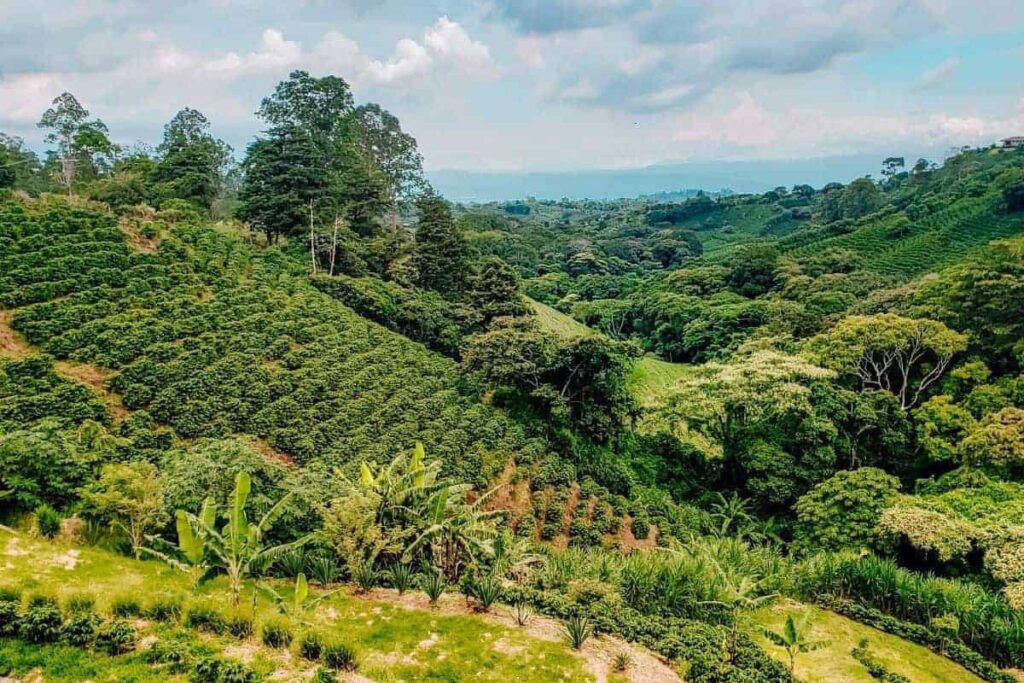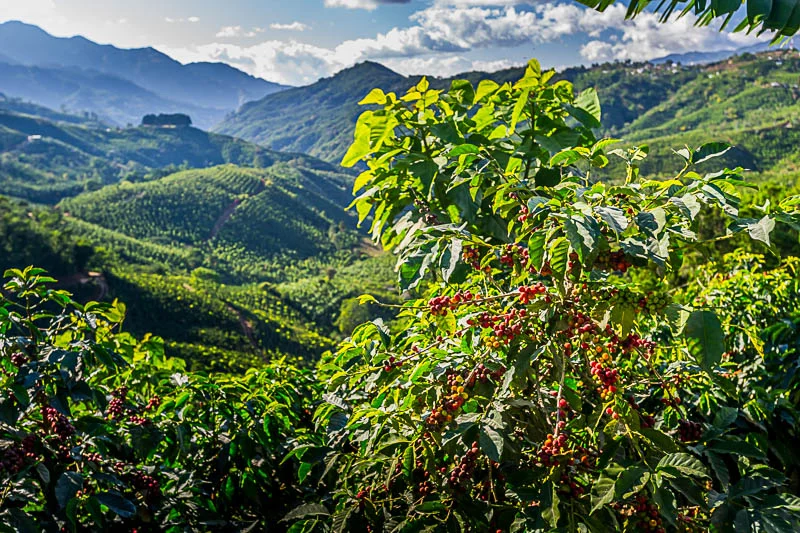
Before surfboards, zip lines, and sloths stole the spotlight, Costa Rica was built on something far more aromatic: coffee. This small Central American nation, blanketed by volcanic mountains and kissed by tropical breezes, has spent nearly 200 years perfecting the art of the bean.
Today, coffee culture is not just a morning ritual—it’s a rich, flavorful journey through history, community, and the soul of pura vida.
If you’ve ever taken that first sip of Costa Rican coffee and felt your taste buds do a happy dance, you’re not alone. But what many travelers don’t realize is that every cup tells a story—a tale of resilience, family farms, volcanic soil, and a country that brewed its way into the world’s best cafés.
☕ How It All Began: Seeds of a Revolution
Costa Rica’s coffee story begins in the late 1700s, when Arabica beans were first introduced from Cuba.
At the time, the country was still under Spanish colonial rule, and nobody quite realized just how perfectly suited the Central Valley was for growing coffee—high altitudes, mineral-rich volcanic soil, a consistent rainy season, and cool mountain air.
Nature had created a coffee paradise; it just needed a little push.
That push came in 1821, right after Costa Rica declared independence from Spain. In a bold and visionary move, the Costa Rican government began distributing free coffee plants to citizens, encouraging small-scale farming.
By the 1830s, coffee had become the country’s most important export—earning it the nickname el grano de oro, or “the golden bean.”
Costa Rica coffee built roads, funded education, and even paid for the construction of Costa Rica’s famed Teatro Nacional in downtown San José. In short: Costa Rica didn’t just grow coffee—it grew on coffee.
🏡 Costa Rica Coffee Plantations: Farms with a Heartbeat
One of the most charming aspects of Costa Rican coffee culture is that it’s deeply rooted in small, family-run plantations. These aren’t sprawling, faceless operations; they’re vibrant microcosms of rural life.
Generations work side by side, passing down not just techniques but values—respect for the land, the importance of sustainability, and the joy of a well-roasted bean.
Plantations like Doka Estate, Café Britt, and Espíritu Santo Coffee Tour offer visitors a chance to step into this world.
You’ll wander among perfectly pruned coffee bushes, watch beans being processed using traditional methods, and breathe in the warm, nutty aroma of fresh-roasted coffee straight from the source.
The backdrop? Misty mountain ridges, birdsong, and the distant rumble of a volcano.
Yes, please!
🌋 Volcanic Vibes & Flavor Profiles
One of the secrets behind Costa Rica’s superb coffee is its volcanic soil. Much of the country’s most famous coffee comes from regions like Tarrazu, Tres Ríos, and Central Valley, where centuries of ash and lava have created mineral-rich earth ideal for coffee cultivation.
Each region produces beans with distinct personalities:
- Tarrazu: High altitudes and cool temperatures produce bright, full-bodied coffee with notes of citrus and chocolate.
- Central Valley: Balanced and smooth, often with floral aromas and a touch of fruitiness.
- Tres Ríos: Known as the “Bordeaux of Costa Rican coffee,” with fine acidity and silky complexity.
So while it’s true that Costa Rica only grows 100% Arabica beans, don’t be fooled into thinking all beans are created equal. The terroir—the land, climate, and altitude—makes all the difference.
🧑🌾 Small Farmers, Big Impact

In 1989, Costa Rica passed a bold law prohibiting the planting of lower-quality Robusta beans. It was a powerful declaration — choosing quality over quantity.
The result? A global reputation for specialty-grade, single-origin coffee that coffee geeks around the world drool over.
More than 90% of Costa Rican coffee is grown on farms smaller than 12 acres, and the country has embraced the movement toward micro-mills—small-scale, on-farm processing stations that allow farmers to control quality from plant to cup.
This shift has led to an explosion of innovation: honey processing, natural drying methods, and experimental fermentation are now common.
Farmers are no longer just growers—they’re artists, crafting complex flavor profiles that reflect both tradition and creativity.
☕ From Plantation to Cafecito: A Daily Ritual
Ask any Costa Rican and they’ll tell you: coffee isn’t just a drink—it’s a lifestyle.
The humble cafecito, typically taken around 3 p.m., is a daily ritual as sacred as a sunset. Often served with a sweet treat like pan casero or empanadas de guayaba, it’s a chance to pause, reflect, and connect.
You’ll see this everywhere—from rural towns to bustling cities. It’s a moment of calm and connection in a fast-moving world.
And if you’re lucky enough to be offered a cafecito while visiting a local farm or family home, say yes. You’re being invited into something truly special.
🌍 Coffee Tourism: A Brew with a View
Today, Costa Rica’s coffee plantations are among the country’s most rewarding and scenic destinations. Travelers can tour historic farms, take barista classes, and even pick and process beans during the harvest season (November to March).
Some of the best places to visit include:
- Doka Estate (Alajuela): One of the oldest, family-run farms with a working water mill and expansive tours.
- Espíritu Santo Coffee Tour (Naranjo): An immersive, hands-on experience perfect for families.
- Finca Rosa Blanca (Heredia): An eco-luxury hotel and organic coffee farm rolled into one.
- Café Britt Tour (Heredia): Part theater, part education—great for those wanting a fun, interactive introduction.
Each offers something different, but all serve up one essential ingredient: a deeper appreciation for the bean that built a nation.
🌱 Sipping Into the Future
As Costa Rica continues to lead in sustainable farming and fair trade, its coffee industry stands not just as a heritage but a hope—a way for rural communities to thrive, ecosystems to be protected, and visitors to experience something more profound than just a great cup of coffee.
So next time you find yourself in Costa Rica, go beyond the beaches. Head for the hills. Wander into a plantation.
Sip a slow-brewed cup beneath a mango tree. And remember: in this land of volcanoes and biodiversity, every bean carries the flavor of history, harmony, and a little bit of heaven.

